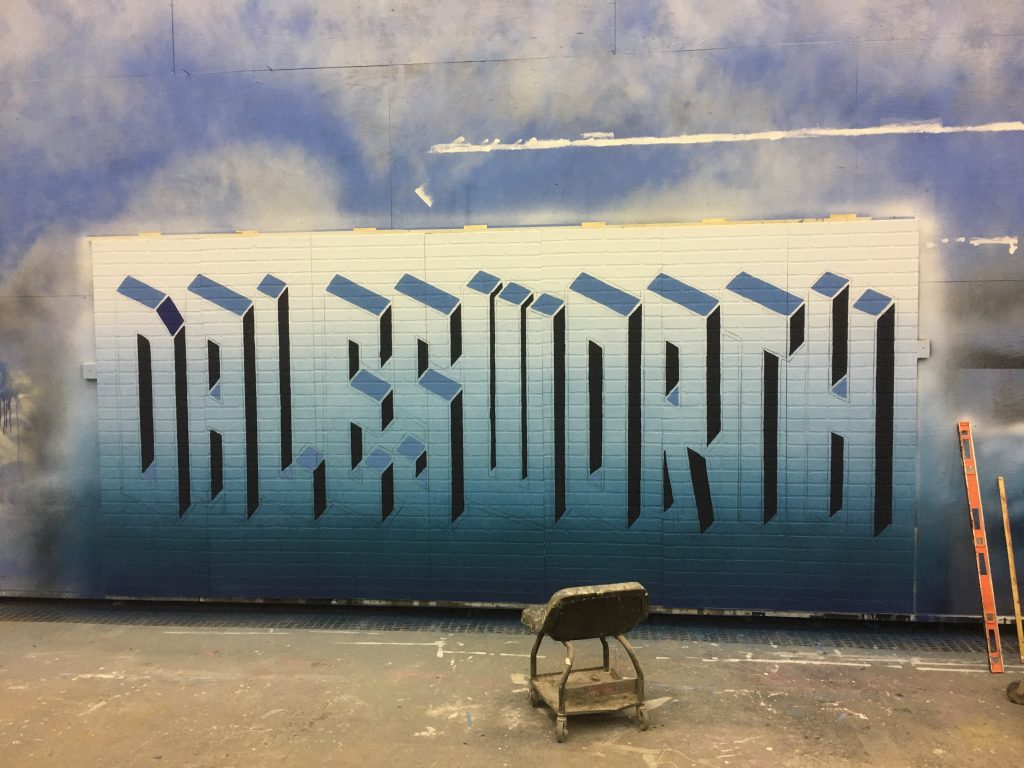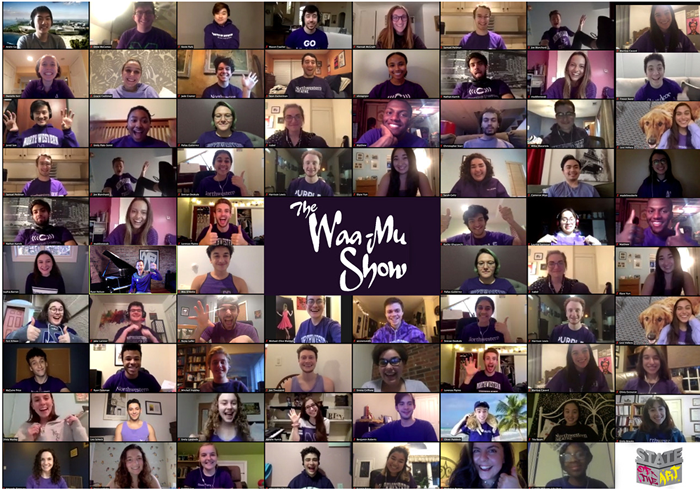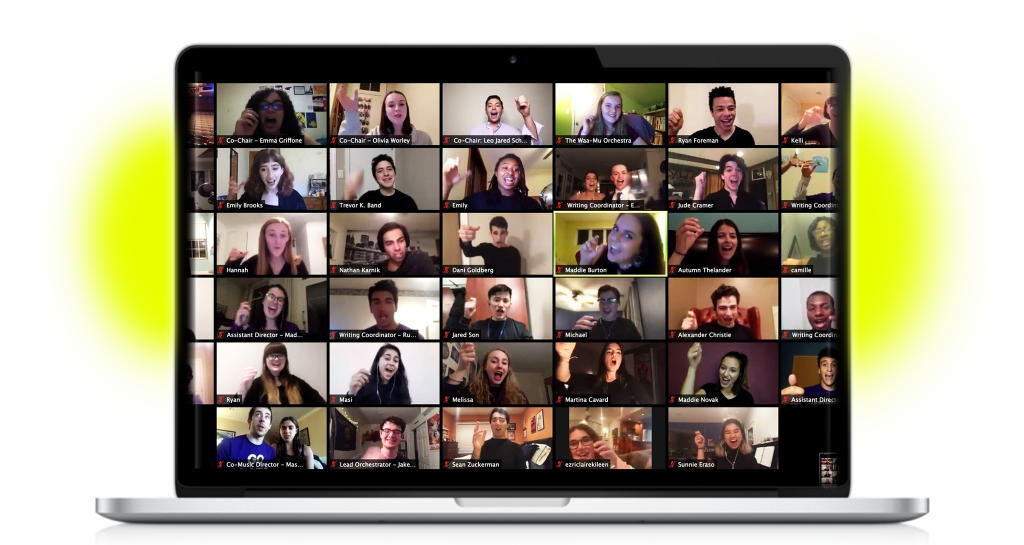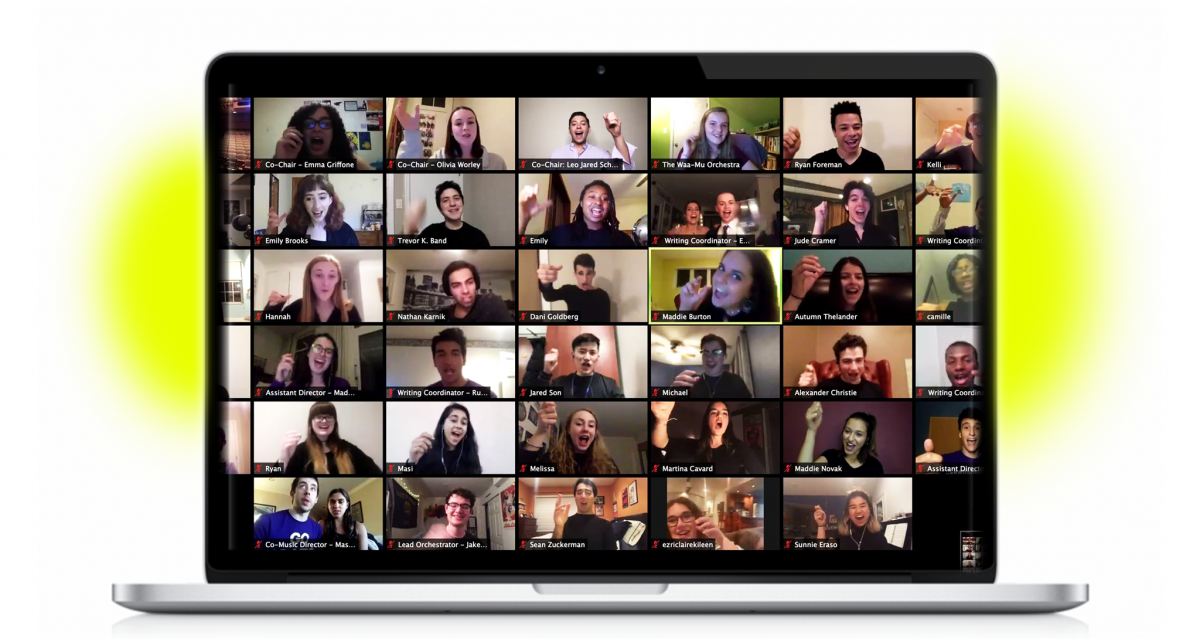Since 1929, there has been a student-written musical performed at Northwestern University under the title of The Waa-Mu Show. Its consecutive run has only ever been interrupted by World War Two. And this year was no different—until students were sent home because of the worldwide spread of the coronavirus. And while the fate of a university musical in the face of a global pandemic might not be of the most urgent concern, what happened on the evening of Friday, May 1, 2020, was a glimmering light in dark times.

The Waa-Mu Show is a musical written, performed, arranged, orchestrated, and produced by students at Northwestern University every May (full disclosure: I am an adjunct faculty member at Northwestern and serve as a songwriting mentor for The Waa-Mu Show).
This herculean task of building and producing an entirely original book musical in under a year begins the previous June. It goes something like this.
At the end of the academic year, a group of student co-chairs are selected to lead the process of creating The Waa-Mu Show. Before the students break for the summer, they hear pitches from students on what the next year’s musical could be. An idea is selected and writing coordinators are chosen to lead the writing process—which will ultimately include up to fifty writers. In the fall, the student leaders begin to outline the story and slowly accumulate other participants. By winter, the outline is loosely nailed down, the set designs are approved, and casting begins—often without the existence of a single note of a song or a word of dialogue. Throughout the top of the year and into the spring, the show is concurrently written, built, rehearsed, arranged, orchestrated, promoted, choreographed, directed, and ultimately put on—culminating in a fully-produced original musical with over 160 student participants. If it sounds crazy, that’s because it is—it’s a small miracle from the gods of theatre when the show debuts every May.
And this year, things began in a very similar fashion with every indication that the show would continue its venerated tradition. A story was pitched by student Matthew Threadgill, telling the tale of the futuristic city of Dalesworth—a metropolis vying to become a future capital while grappling with the issues of its past. Outlines were created. Characters were invented. Songs were written. However, just as the team was gearing up for its last developmental reading presentation in mid-March, the news of a spreading pandemic began to roll in. Of course, the students had concerns other than their show. “The gravity of the moment didn’t immediately draw my attention to Waa-Mu,” said writing coordinator Ruchir Khazanchi. But eventually, his thoughts turned towards the production. “Hundreds of students had been working non-stop for almost a year to make this happen. And for it to be swept into uncertainty so quickly was jarring for a lot of folks.” Writing coordinator Emmet Smith agreed, “I think the hardest part was how drawn out the process of our spring cancellation was—every day we came up with contingency plans for the best and worse case scenarios given what we knew. And every day our best-case scenario of an on-campus production grew grimmer. It would’ve been easier on our hearts if the Band-Aid was ripped right off.”
Students were sent home and the future of this year’s Waa-Mu show was thrown into question. Khazanchi feared for the worst. “Nobody knew what the next steps were, or if there were going to be next steps.” The Waa-Mu team gathered on the video conferencing tool Zoom to discuss what would happen next. Co-chair Emma Griffone knew that they had to continue. “Waa-Mu has always been a process-oriented organization, so we were primarily concerned with working through our draft.” But as discussions began, it became clear that perhaps there was something more that could be done. Music supervisor and faculty member Ryan Nelson remembers that first call fondly. “That first meeting with the co-chairs, writers, music team, and our director was really thrilling. There was so much energy and so many ideas. At the end of the call, we decided we were doing Waa-Mu. No matter what.”
But what that actually meant was still completely up in the air. And now, in the usual crush of writing and producing a new musical came the question: What does producing this musical even mean?
As rehearsals went on over Zoom, co-chair Leo Jared Scheck was impressed with how it all started to come together. “It wasn’t until rehearsals had been going for a few weeks that we started to realize, hey, this is actually turning out really well. So we decided to do a reading on May 1st, our original opening date.” Co-chair Jon Toussaint added, “And even then, it was only the week of the show where we began to open the online reading to people who weren’t on the team.”
So there it was. This completely original musical would be produced on Zoom. But how? Co-chair Olivia Worley remembers the initial challenges. “Obviously, there are a lot of aspects of a live performance that are really hard to translate to a virtual platform, so a big part of our process was figuring out how to create collaborative relationships when we can’t all be in the same room together.” Paramount to that is, how do you sing together over Zoom? Latency issues make it impossible for more than one person to sing together at once. Enter Team Music.

“Our Team Music community is a cult of freaks of nature, and they have always thought outside of the box. So I never had a doubt in my mind that they’d be able to make it work,” said Smith. As songs neared completion, the music team—made up of music directors, arrangers, orchestrators, and copyists—would lay down a track in a program called Logic. They would then send that track to the various performers so that they could learn the song. Rehearsals would take place over Zoom alongside rehearsals with director/choreographer Amanda Tanguay. Once everything was learned, students would record their sung vocals—often on their phone—and then send them back to Team Music so that they could mix them into a final track. Now that the show was tracked, there was the question of how to come close to recreating the theatrical devices of theatre—and how to make it all as live as possible.
On the evening of Friday, May 1, around 400 people across the world gathered on a Zoom webinar to watch the live debut of The 89th Annual Waa-Mu Show, State of the Art. By reconfiguring the default settings of the software, the entire cast and crew made it so that when they turned on their video they would appear on screen, effectively making an entrance. By muting their video, their box would disappear and they would make an exit (instead of leaving a box with their name or a picture on it). Scenes with two people could grow to have three, four, or more with just the click of a button, and Zoom would reconfigure the boxes automatically. Backgrounds were used to suggest settings, and character names appeared below every performer.
When the time came for musical solos, the performers would activate a track in their own space and sing along live. And when group numbers arrived, a stage manager would play the pre-recorded group audio while the cast muted their own audio and sang along to the track. Over the next two hours, a fluid, entertaining, and moving live experience featuring actors all around the country was performed for an audience as far-flung as the Netherlands.

Songs were born. Characters sprung to life. And a new story made its theatrical debut. What began last year as a dream had without warning become a seeming impossibility—but was now emerging as a full-fledged reality. And as students’ faces took to this new stage, one after the other, it was hard not to be moved by their ingenuity, artistry, and optimism. An ensemble number made up of a grid of thirty undergrads singing their hearts out to a track written by one team and assembled by another has its own theatrical power—and is touching by the very fact of its own existence. These students were handed a uniquely challenging situation and found a way to create something truly of themselves all the same.
Writing coordinator Michael-Ellen Walden recounted the experience of watching it all come together. “An unexpected delight during the final performance was realizing that, although I couldn’t hear or see the audience, I could view the names of each of the 400-plus viewers. Scrolling through the names of Waa-Mu alumni and classmates, the parents of those who had worked on the show, and professors reminded me of not only how many people have been touched by State of the Art, but The Waa-Mu Show in years past. I hope we made everyone who has been a part of Waa-Mu proud of us continuing the tradition against the odds.”
And although director Amanda Tanguay was thrilled with the final performance, she celebrates something bigger. “We banded together, supported the creation of new art, but also supported each other during a difficult period of time. Ultimately, it is very clear to me that the final performance is not the only thing that makes Waa-Mu special. It is the people involved.”
All musical theatre fans are right to hope that the future of their beloved art form is not relegated to the confines of Zoom webinars. It’s an imperfect simulacrum of the real thing. However, it is hard to not be inspired by a group of students who refused to let their show be interrupted by a worldwide pandemic and instead joined together to create new ways of storytelling. And if that’s not the future of musical theatre, I don’t know what is. I can’t wait to see where they lead us.

Ryan Cunningham is a Jonathan Larson Award winner and a Drama Desk and Mac Award-nominated lyricist, bookwriter, and playwright. His Off-Broadway musical written with Joshua Salzman, I Love You Because, has played both nationally and internationally in five different languages. Also with Salzman, he has written the musicals Next Thing You Know, The Legend of New York, and Michael Collins. He is a Creative Director at the Broadway advertising agency AKA and teaches at Northwestern University. He lives in Chicago with his wife and two sons.
